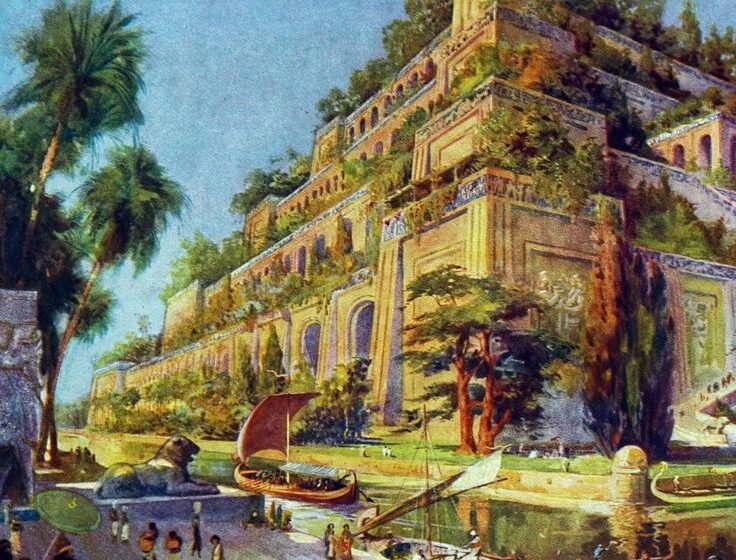MESOPOTAMIA: THE ANCIENT CIVILISATION

The world’s history has been a spectator of many great civilisations that have arisen and ended. However, the impacts of ancient civilisations have recurring effects on the world even today. One of the most ancient and might even rumoured to be the first civilization known to man was that of Mesopotamia. It is believed to have existed around 4000-3500 B.C. possessing strikingly modern and western features of daily life and administration. This civilization is believed to have met with its decline in the early 4th century B.C. after Alexandra the Great overpowered Babylon and took it under his wing for the Great Greek Empire.
Mesopotamia was situated between the two mighty rivers named Tigris and Euphrates, North of the Fertile Crescent, in West Asia. It is present-day Iraq and includes parts of Iran, Turkey, Syria and Kuwait. Mesopotamia is known for its contributions to many other early human civilisations. The authority of Mesopotamia stayed in the hands of the Sumerians and Akkadians, both originating from different areas, till the very end in 539 BC, when Babylon was captured by Alexander the Great. The contributions of this civilisation cannot be left unscathed, one of the most prominent inventions made during this civilisation, is that of the Wheel. The wheel was initially used for pottery before it advanced into working as a tool to structure modes of transport and other applications.
Firstly, the Sumerian people inserted rotating axles into solid discs of wood, then around 2000 BC, they started making lighter wheels by using hollowed out discs. Another major incidence of invention was the first plantation of cereal crops. The variety of evidence found in the Mesopotamian grounds confirms that the civilisation was an early centre of cereal crop plantation. Like, Traces of broomcorn were found at the Khani Masi site in the Kurdistan region of Iraq. Mesopotamians developed sophisticated irrigation systems to harness the waters of the Tigris and Euphrates rivers, enabling them to cultivate wheat, barley, and other crops on a large scale. These advancements not only ensured food security but also supported the growth of urban settlements and complex societies.
The Mesopotamians also made remarkable progress in the field of writing and record-keeping. The invention of cuneiform, one of the world’s earliest writing systems, allowed them to document transactions, laws, and literature. Written on clay tablets using reed styluses, cuneiform evolved from pictographic representations to a more abstract script. This system facilitated the administration of cities and empires, enabling rulers to issue decrees, record taxes, and maintain accounts. The Epic of Gilgamesh, a literary masterpiece from Mesopotamia, remains one of the oldest known works of literature and provides invaluable insights into the culture, beliefs, and values of the time. Another significant contribution of Mesopotamia was the development of legal systems. The Code of Hammurabi, one of the earliest known sets of written laws, established principles of justice and governance. Inscribed on a stone stele, the code outlined rules and punishments for various offences, reflecting the values and social hierarchies of the time. It emphasized the concept of retributive justice, often summarized as “an eye for an eye.” The Code of Hammurabi served as a model for subsequent legal systems and influenced the development of law in other ancient civilizations.
Nutrient and sale commerce were quite significant in the welfare of Mesopotamia. The civilization economically became a linking-scattering point for goods, ideas, and concepts since it was located between important trade routes. For example, these commodities were textiles that Mesopotamians exchanged for metals or agricultural products from their neighbouring regions, giving rise to collective interchange and economic prosperity. The Mesopotamian people traded in standard weights and measures to facilitate and avenge the sophistication of their economic systems. The great civilization faced numerous adversities that eventually led to its downfalls. The fertile lands and strategic location of Mesopotamia embroiled it in the intended conquest of all those neighbouring empires seeking the target. It was not also spared from adverse environmental factors like soil salinization from over-irrigation, which brought about less agricultural produce. So many internal political fractions and infightings left whole civilizations much weakened and opened their gates to the eventual conquest by external powers.
Science and technology in Mesopotamia are history in themselves. The Mesopotamians were among the first people to use systematic observation and logic for practical problem-solving. They have created exemplary mathematic models, such as the base-60 number system which is still used today for measuring time and angles. It made them able to perform complex calculations for building architectural wonders like aqueducts and canals for irrigation. They even invented forms of early geometry, to measure land and design structures. Astronomy is another phenomenal field among Mesopotamians. They have recorded movements of all celestial bodies, forming very accurate lunar calendars and then predicting eclipses. Such observations helped them in agriculture and were intertwined with their religion, as they believed in making earthly events dependent upon heavenly events.
The legacy of Mesopotamia remains in a thousand different ways. The actual foundations of civilizations yet to come were established through writing, law, and technological breakthroughs that originated in Mesopotamia. Quite so many of the past achievements of Mesopotamia set the track for the ancient world, carrying within it vibrations still echoing in the modern society of today. All study concerning the ancient Mesopotamian civilization grants us a sharper and clearer view into human history and even shows the legacy of our common heritage. Similarly, over and above all, the contributions of Mesopotamia to the world are beyond any measures at the moment. From inciting inventions like the wheel to developing agriculture and most legally established writing systems, it had indeed invented many things that changed the course of history. Mesopotamia, or the land between Tigris and Euphrates, was indeed the birthplace of so many innovations and cultures, which have forever altered the face of the world. It will serve as a testament to the rise and fall of human civilization, making its reality a strong enough lesson for the present and for the future to come.


